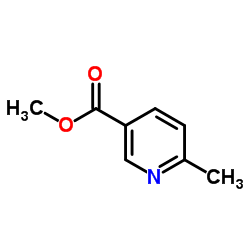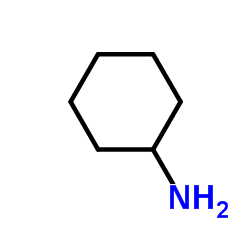GSK2334470

GSK2334470 structure
|
Common Name | GSK2334470 | ||
|---|---|---|---|---|
| CAS Number | 1227911-45-6 | Molecular Weight | 462.591 | |
| Density | 1.3±0.1 g/cm3 | Boiling Point | N/A | |
| Molecular Formula | C25H34N8O | Melting Point | N/A | |
| MSDS | USA | Flash Point | N/A | |
Use of GSK2334470GSK2334470 is a highly specific and potent inhibitor of PDK1 with an IC50 of 10 nM. |
| Name | (3S,6R)-1-[6-(3-amino-1H-indazol-6-yl)-2-(methylamino)pyrimidin-4-yl]-N-cyclohexyl-6-methylpiperidine-3-carboxamide |
|---|---|
| Synonym | More Synonyms |
| Description | GSK2334470 is a highly specific and potent inhibitor of PDK1 with an IC50 of 10 nM. |
|---|---|
| Related Catalog | |
| Target |
IC50: 10 nM(PDK1)[1] |
| In Vitro | Small molecule GSK2334470 inhibits PDK1 with an IC50 of ~10 nM, but does not suppress the activity of 93 other protein kinases including 13 AGC-kinases most related to PDK1 at 500-fold higher concentrations. Addition of GSK2334470 ablates T-loop residue phosphorylation and activation of SGK isoforms and S6K1 induced by serum or IGF-1 (insulin-like growth factor 1). GSK2334470 and AZD8055 effectively inhibite phosphorylation of PDK1 and mTOR, respectively, and induce higher G0–G1 ratio in LAN-1-MK than that in LAN-1 as well. PDK1 and mTOR inhibitors effecte on phosphorylation of GSK3β in some of resistant sublines[2]. |
| In Vivo | The efficacy of the PDK1 inhibitor (PDKi) GSK2334470 is tested in newborn BrafV600E::Pten−/−mice subjected to systemic administration of 4-HT. Twice weekly administration of PDK1 results in marked inhibition of pigmented lesions and concomitant melanomagenesis, as well as significant inhibition of lung metastases, seen by H&E staining-based quantification (~80%), and lymph node metastases as by S100 immunostaining, similar to the phenotype seen upon genetic ablation of Pdk1[3]. |
| Cell Assay | GSK2334470 is dissolved in DMSO and diluted with appropriate medium before use. To study the inhibitory effect of GSK2334470 on mTOR-S6K pathway, non-resistant cells and the resistant sublines are treated with GSK2334470 at 5 μM for 1.5 and 12 h in 10 % FBS medium with/without MK-2206 (5 μM)[2]. |
| Animal Admin | Mice is dissolved in DMSO and then diluted with PBS or saline. BrafV600E::Pten−/− are generated as previously described. Cohorts of six animals per group are used in each experimental group. GSK2334470 is administered through IP injection (100 mg/kg) 3 times per week starting the same day of topical administration of 4-hydroxytamoxifen and ending at the time of mouse collection, based on earlier studies[3]. |
| References |
| Density | 1.3±0.1 g/cm3 |
|---|---|
| Molecular Formula | C25H34N8O |
| Molecular Weight | 462.591 |
| Exact Mass | 462.285553 |
| PSA | 132.30000 |
| LogP | 2.31 |
| Appearance of Characters | white to light brown |
| Index of Refraction | 1.667 |
| Storage condition | 2-8°C |
| Water Solubility | DMSO: ≥10mg/mL |
| RIDADR | NONH for all modes of transport |
|---|
|
~% 
GSK2334470 CAS#:1227911-45-6 |
| Literature: WO2010/59658 A1, ; Page/Page column 196 ; WO 2010/059658 A1 |
|
~% 
GSK2334470 CAS#:1227911-45-6 |
| Literature: Journal of Medicinal Chemistry, , vol. 54, # 6 p. 1871 - 1895 |
|
~% 
GSK2334470 CAS#:1227911-45-6 |
| Literature: Journal of Medicinal Chemistry, , vol. 54, # 6 p. 1871 - 1895 |
|
~% 
GSK2334470 CAS#:1227911-45-6 |
| Literature: Journal of Medicinal Chemistry, , vol. 54, # 6 p. 1871 - 1895 |
|
Inhibition of DNA methyltransferase as a novel therapeutic strategy to overcome acquired resistance to dual PI3K/mTOR inhibitors.
Oncotarget 6(7) , 5134-46, (2015) Dual PI3K/mTOR(phosphatidylinositol 3-kinase/mammalian target of rapamycin) inhibitors are being evaluated clinically for the treatment of tumors with a hyperactivated PI3K/mTOR pathway. However, unex... |
|
|
Activation of IGF1R/p110β/AKT/mTOR confers resistance to α-specific PI3K inhibition.
Breast Cancer Res. 18 , 41, (2016) The PI3K pathway is hyperactivated in many cancers, including 70 % of breast cancers. Pan- and isoform-specific inhibitors of the PI3K pathway are currently being evaluated in clinical trials. However... |
|
|
Kinome profiling reveals breast cancer heterogeneity and identifies targeted therapeutic opportunities for triple negative breast cancer.
Oncotarget 5(10) , 3145-58, (2014) Our understanding of breast cancer heterogeneity at the protein level is limited despite proteins being the ultimate effectors of cellular functions. We investigated the heterogeneity of breast cancer... |
| (3S,6R)-1-[6-(3-Amino-1H-indazol-6-yl)-2-(methylamino)-4-pyrimidinyl]-N-cyclohexyl-6-methyl-3-piperidinecarboxamide |
| CS-0917 |
| 3-Piperidinecarboxamide, 1-[6-(3-amino-1H-indazol-6-yl)-2-(methylamino)-4-pyrimidinyl]-N-cyclohexyl-6-methyl-, (3S,6R)- |
| QC-8425 |
| GSK2334470 |
![(3S,6R)-1-[6-(4-cyano-3-fluorophenyl)-2-(methylamino)-4-pyrimidinyl]-N-cyclohexyl-6-methyl-3-piperidinecarboxamide structure](https://image.chemsrc.com/caspic/182/1227911-44-5.png)


